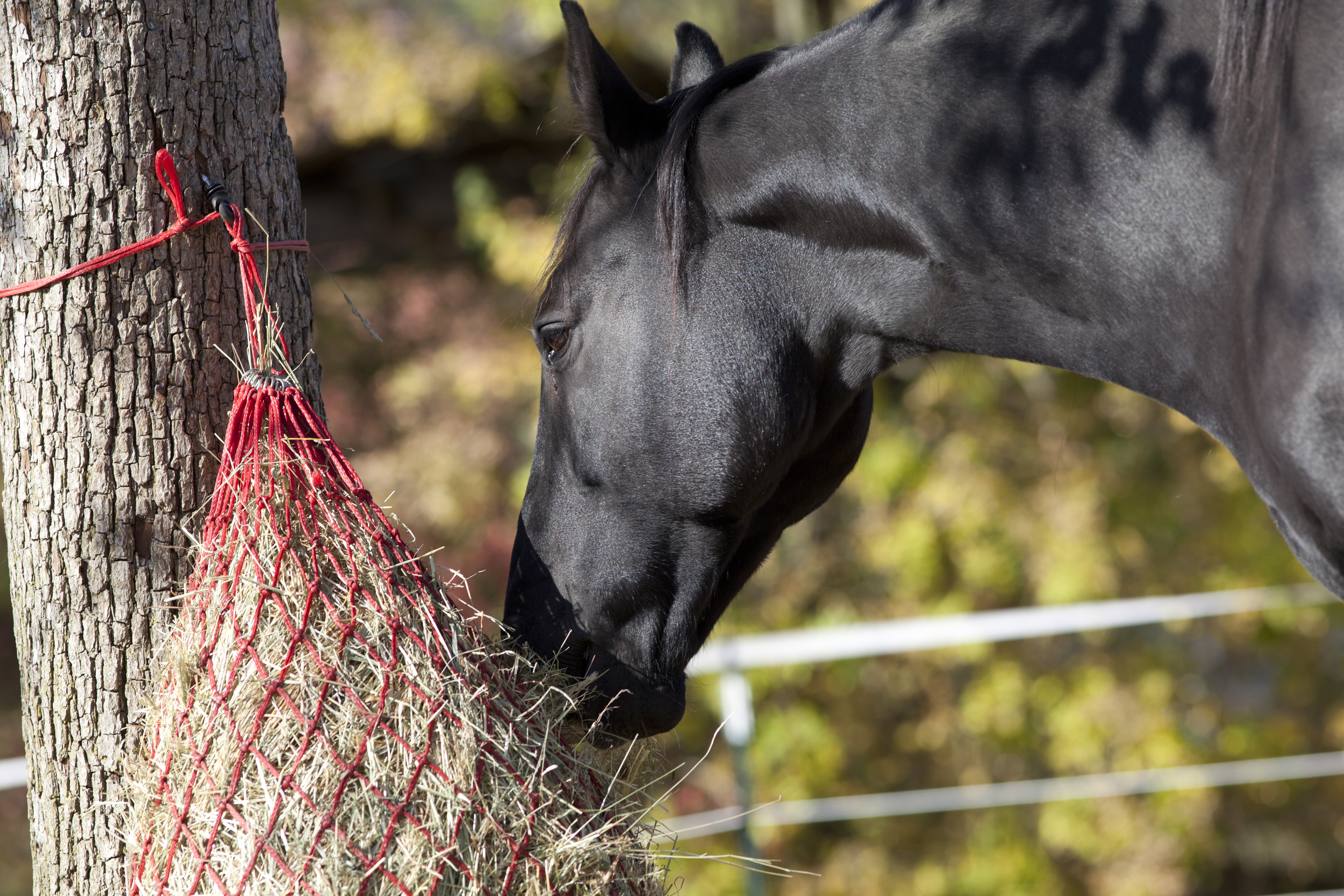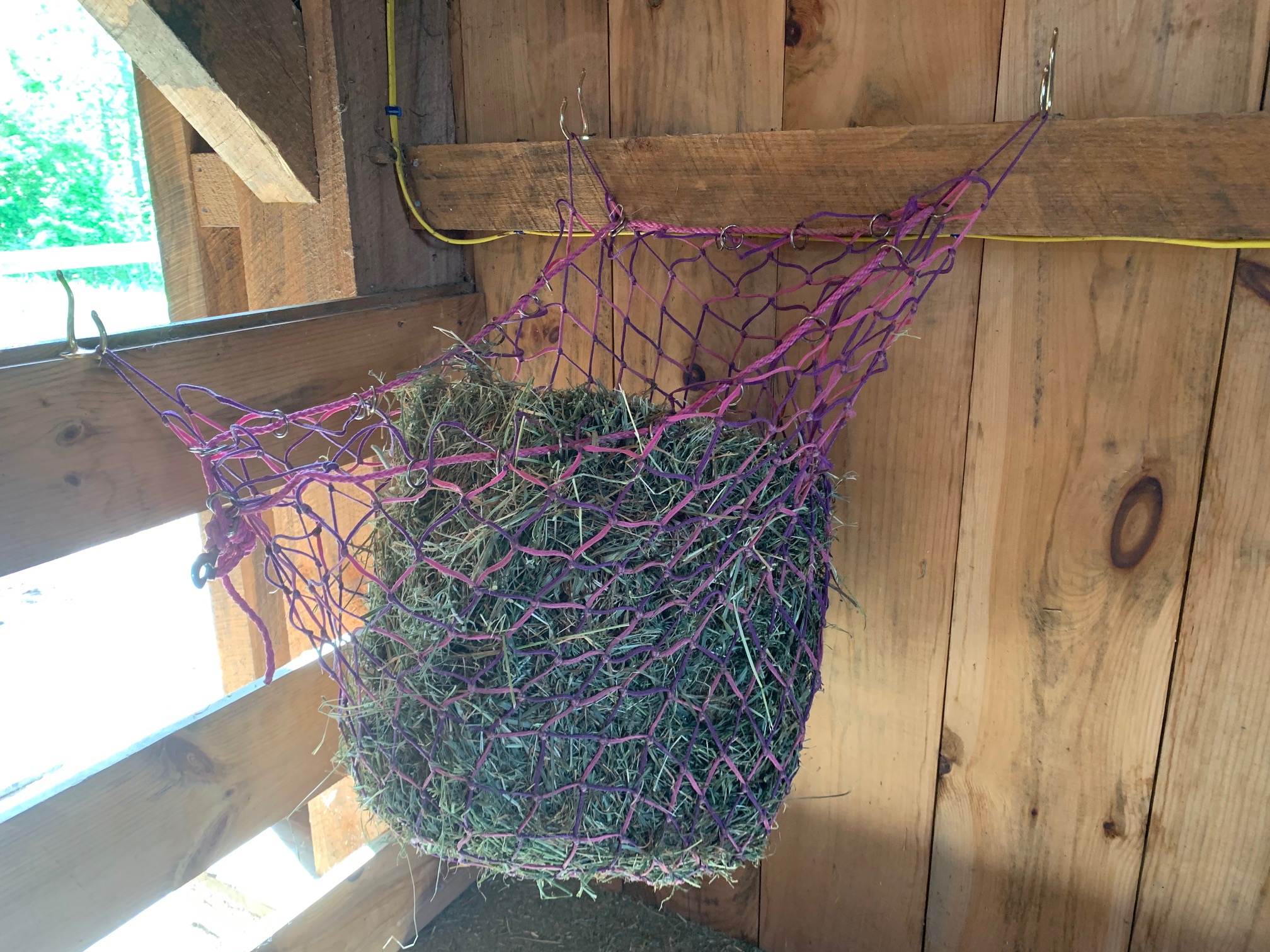To Net or Not to Net: The Hay Net Dilemma

by Jessica Mizzell
Having worked in a few different barns over the last decade, I have come to realize that just about every stable manager has differing ideas and opinions on managing hay. I think we all know at least one horse in the barn who likes to paw their hay into the middle of their stall and turn it into bedding, taking up way more time and space to clean, not to mention the wasted money! Or how about, what do you do for the easy keeper pony you cannot seem to keep the weight off of, but also do not want them to go without forage for long periods of time? If you have been in either of these scenarios, or one like it, hay nets may be the option for you. The following list of pros and cons are just a few things that I have picked up over the years about managing hay through the use of hay nets when using small square bales.
The Pros:
- Cost Efficiency: Hay is expensive right now, and prices seem to be rising. The state I live in had a drought the summer of 2020 that was tough on hay farmers and crops. There has been a big shortage this year, leading to an exponential increase in price. Using a small-holed hay net will influence horses to eat a bit slower and waste less, leading to more cash in your pocket at the end of the day!
-
Cleanliness: As mentioned above, some horses like to push or paw their hay into the middle of the stall and use it as bedding, or worse, their toilet. Using a hay net will keep hay in one place, off the ground, and away from those sometimes troublesome horse hooves. This ultimately cuts down on time spent cleaning, as well as gives you more space in your manure pile or dumpster.
-
Health Benefits: In some areas, sand colic is a big issue for horses that eat off the ground. Using a hay net will keep hay off the sandy floor and discourage the horse from ingesting sand, thereby mitigating the risk of colic. Hay nets can also help to lower the risk of respiratory issues as the horse is not inhaling as much dust from the ground.
-
Weight Management: If you are trying to manage a heavier horse’s weight, a small-holed hay net might be a really good option. Hay nets make the horse work a little bit harder for their food, slowing down their eating, and therefore mimicking their natural diet. This will keep the horse from running out of hay quickly, to allow more constant access to forage without surpassing their recommended hay intake for the day.
-
Gastro-Intestinal Benefits: Horses are designed to be constantly eating and digesting small amounts of forage for their systems to work correctly. Consequently, hay nets are wonderful for ulcer prevention. They allow the horse constant access to forage which works as a buffer to stomach acid. Hay nets also cut down on boredom, which often lead to stress behaviors furthermore causing ulcers.
The Cons:
- Position: Hay nets can put a horse’s head and neck in an unnatural position, which can lead to stiffness in the body. Hanging the nets a bit lower, or purchasing hay nets with larger holes can prevent the yanking motion that comes from the horse taking a bite.
-
Safety: If there is trouble, horses are waiting to find it. Hay nets are one more thing for a horse’s halter, blanket, or shoe to get caught on. Always make sure that they are hanging high enough off the ground so that they cannot step through the net. This past winter, I had to duct tape over my horse’s blanket buckles after he got stuck! Thankfully, he did not panic and patiently waited for mom to come rescue him. Some blankets have better suited buckles than others, and you can always make the hay nets attach to a breakaway for this purpose. Personally, I like to take halters off during turnout and in the stall, so this would offer one less item for the hay net to get stuck on.
-
Convenience: Hay nets are a little more time consuming to fill than throwing a few flakes on the ground. You have to find a method that works best for you and stick to it. I find that filling bags for the next feeding in advance, such as the night before, makes for a quick AM feeding. I have seen a three-hook on the wall method that hay nets can loop over to assist in opening the net and sliding the hay in with ease. I have also seen a method using a trash can, where the hay net opens over the rim of the can to slide the hay in. Or the good old, balance-the-hay-between-your-legs-as-you-wrap-the-net-around-the-flakes method!

There are so many different types of hay nets and bags in all shapes and sizes for each individual’s needs. A smaller holed net will cause the horse to eat slower, giving them more constant access to forage, while a larger holed bag can just work to keep the mess off the ground. Throwing hay on the ground will give horses a more natural eating position, but could lead to other issues. All in all, you know your horse best and have to do what is right to suit each horse's needs!






